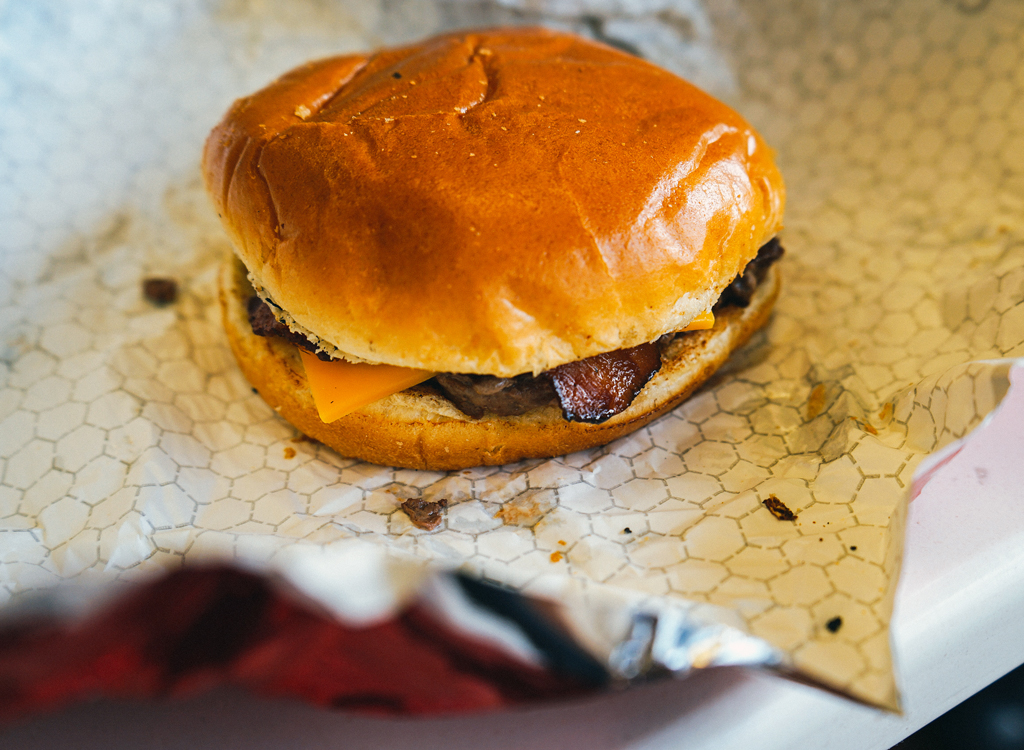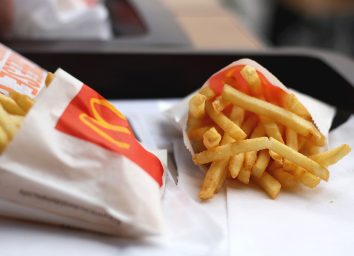Fast Food Is Actually Unhealthier Today Than It Was in the 80s

When you tell your health-conscious friends or colleagues that you're heading to a place like McDonald's or even Taco Bell for lunch, you may get an eye roll—and maybe for good reason, especially now with new information that has been revealed. A study found that fast food has gotten more unhealthy over the years and what you're eating today is nothing like what was served up in a drive-thru in the 1980s.
Fast food has earned a bad reputation over the years, largely because of its large portion sizes, high fat and sodium contents, and processed ingredients. This is of great concern for Americans with the adult obesity rate currently sitting at an all-time high. According to the most recent data from the Centers for Disease Prevention and Control, about 40 percent of U.S. adults are obese. Eating fast food regularly is a large contributor to this ever-growing obesity rate, and it's interesting to note that there was a time when quick service food didn't pose as much as a threat to Americans' health as it does today.
How is fast food unhealthier today than it was in years past?
A study recently published in the Journal of the Academy of Nutrition and Dietetics found that entrées served at the top 10 fast-food giants (based on sales) have increased in portion size by 39 grams, which is equivalent to about 90 calories, since 1986. While 90 calories may not seem like a huge number, think about how that number multiplies based off of how often you consume fast food. Let's say an individual eats one fast-food meal, without any sides, once a week. That person consumes about 4,680 calories more per year from that one fast food meal alone than they would have in 1986. In addition, fast-food entrées contain roughly 13.8 percent more sodium than they did three decades ago.
How was this study conducted?
In order to deduce this hike in calories and sodium over the past 30 years, researchers analyzed menu items at fast-food restaurants Arby's, Burger King, Carl's Jr., Dairy Queen, Hardee's, Jack in the Box, KFC, Long John Silver's, McDonald's, and Wendy's, from the years 1986, 1991, and 2016. The lead author of the study, Dr. Megan A. McCrory of the Department of Health and Rehabilitation Sciences at Boston University, reports, "It's the longest-spanning and most in-depth look at fast food's caloric energy and nutrient makeup, decade over decade, that has ever been conducted."
What else did researchers find?
McCrory and her band of researchers found that the number of menu items offered at these respective chains combined increased by 226 percent. They also found that entrées, on average, increased by 13 grams, or 30 calories each decade—and that's not even the category that witnessed the biggest caloric hike. Desserts have increased by 186 calories, or 72 grams, since 1986. Even sides like French fries saw an increase of 42 calories and 11.7 percent more sodium.
The addition of salads to fast-food menus over the years doesn't cut it, either. When you factor in the amount of dressing, unhealthy add-ins, oversized portions of meat, and cheese, fast food salads might not end up being much better than that burger. There's a lot more change that needs to be made, and hopefully soon, as a lot of Americans eat at these fast-food places often. In a presentation about the study's findings, McCrory said that in the U.S. about 37 percent of adults at least 20 years old eat fast food on any given day, and 45 percent of adults between the ages of 20 and 39 do the same.
So what can be done to prevent the obesity rate from escalating any further? Researchers proposed that fast-food restaurants offer smaller portion sizes, or, even more extreme, introduce a calorie taxation. Imagine what would happen if you had to pay a tax on higher calorie meals. You likely wouldn't be as tempted to order that Big Mac with fries and a large soda…








